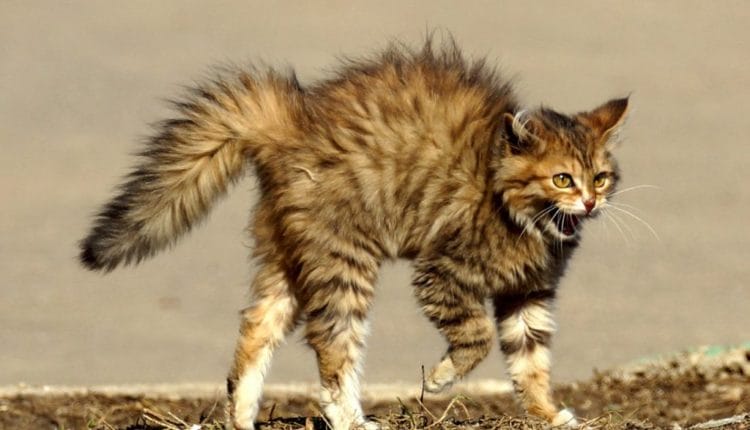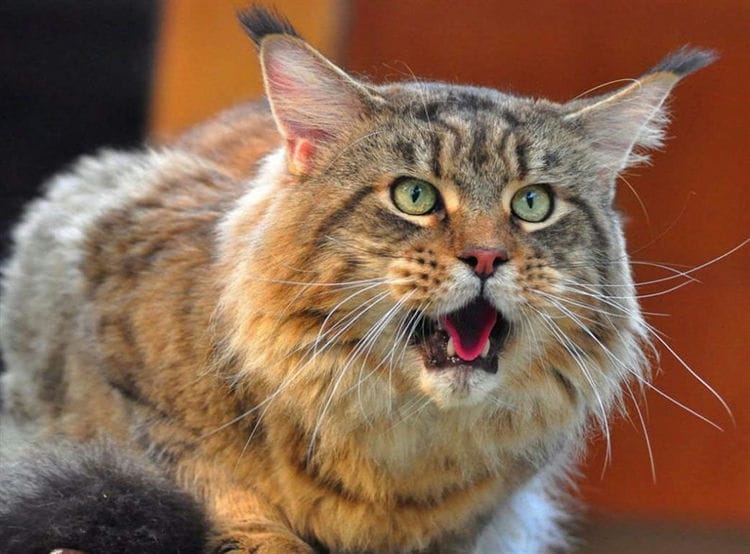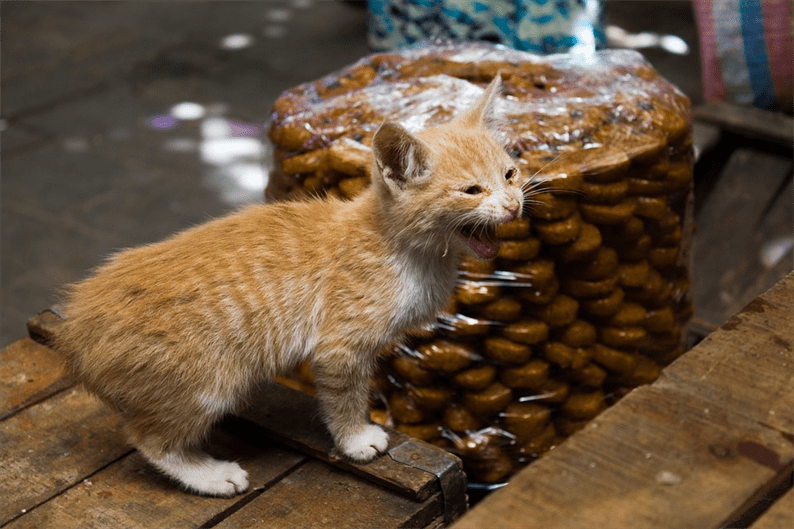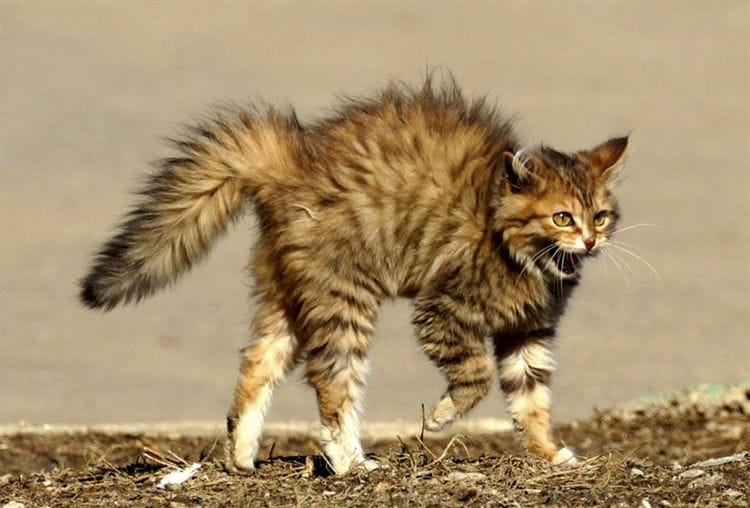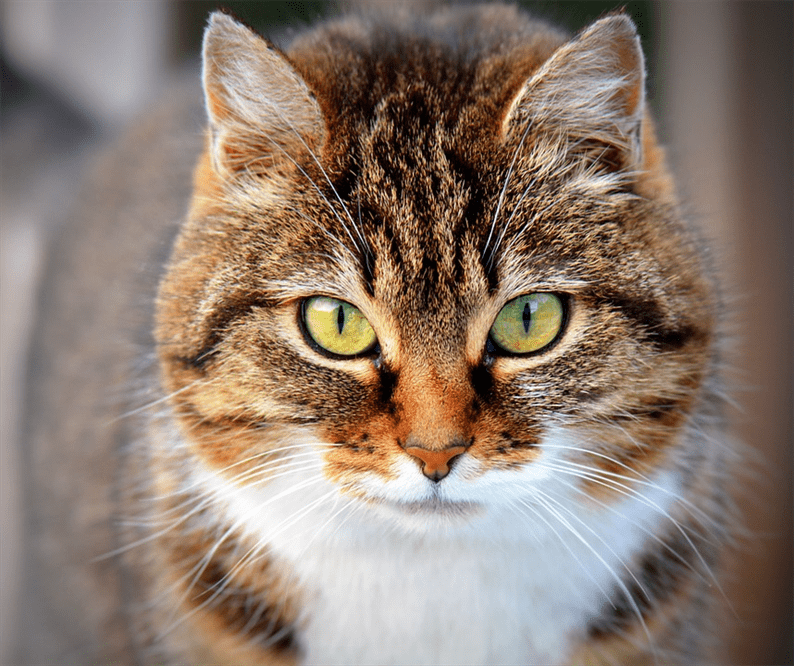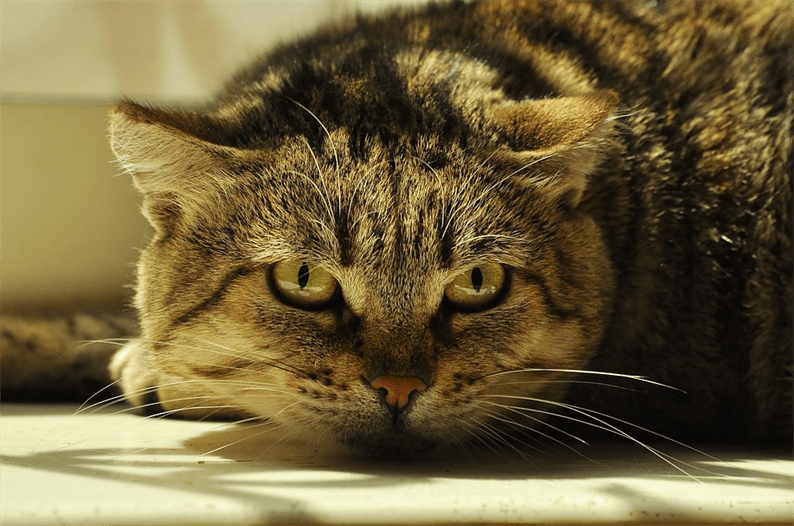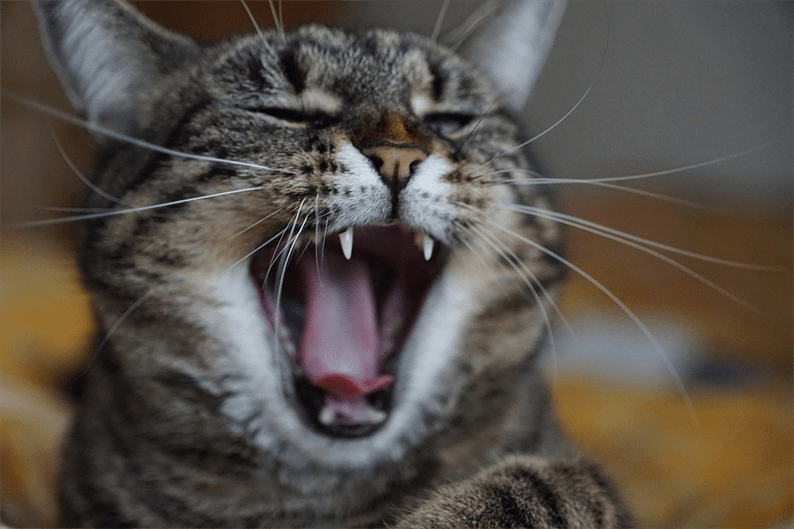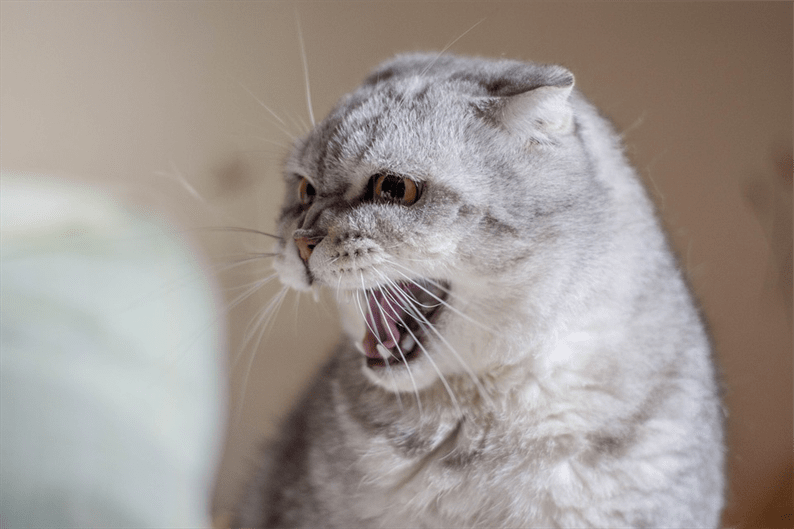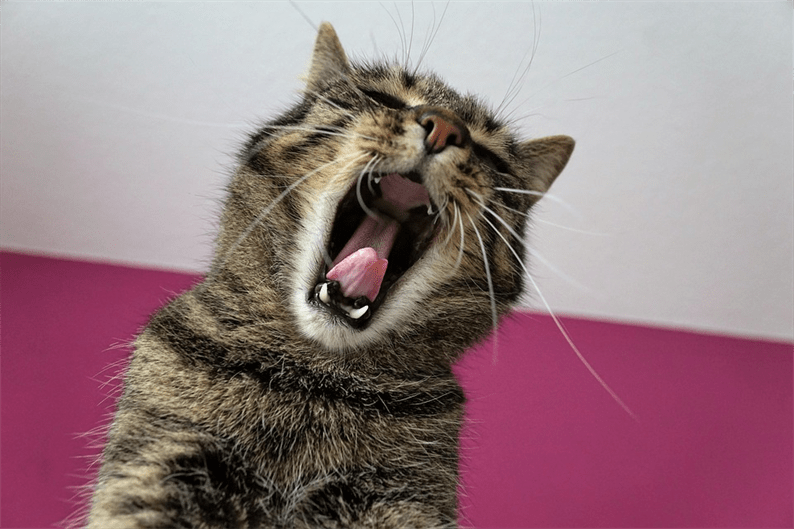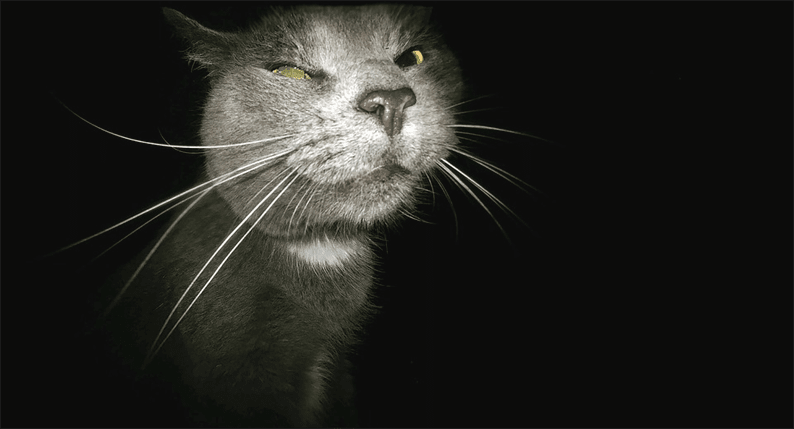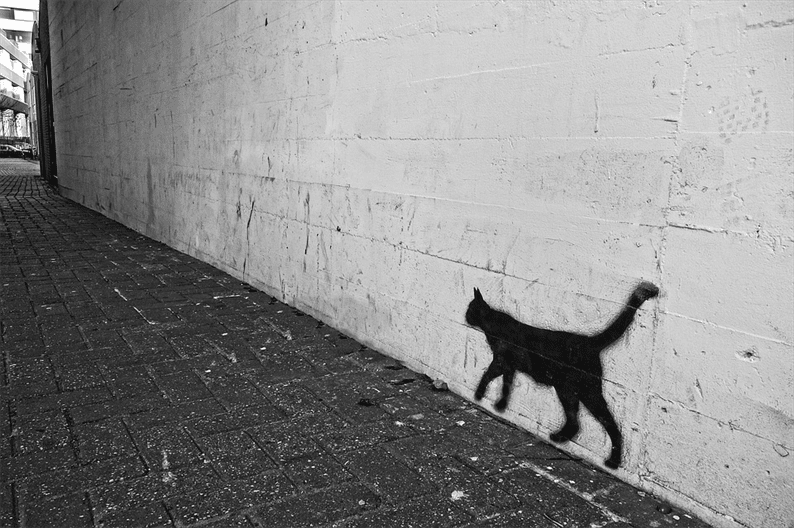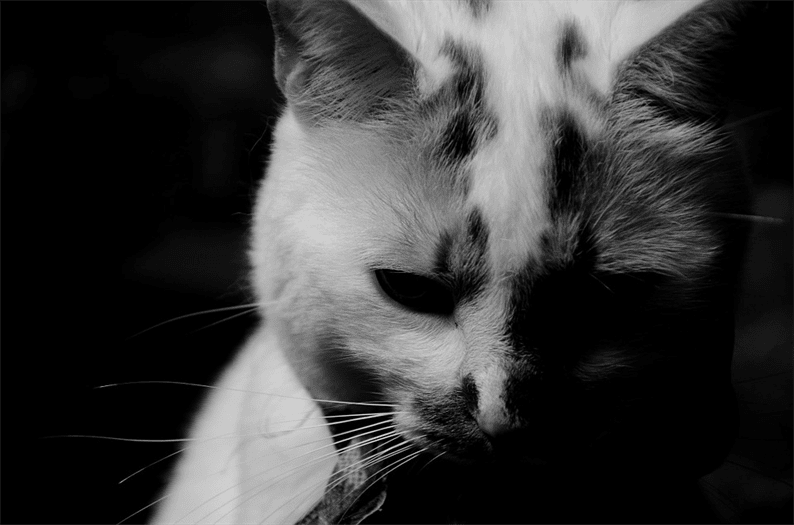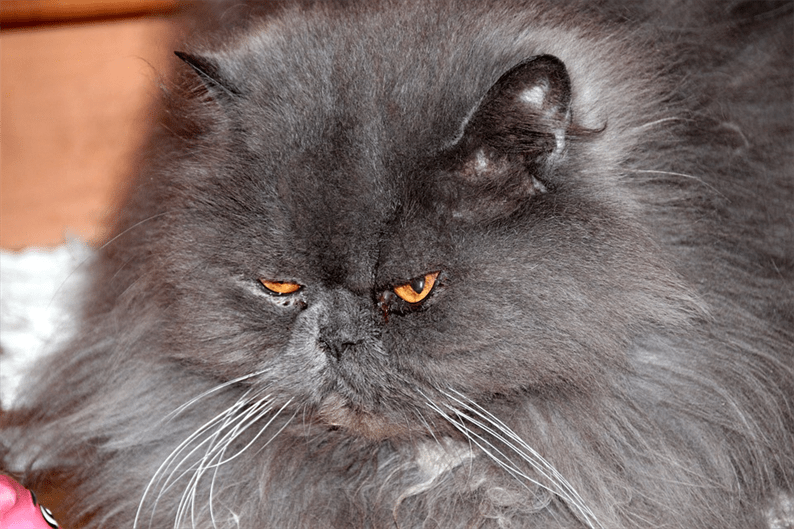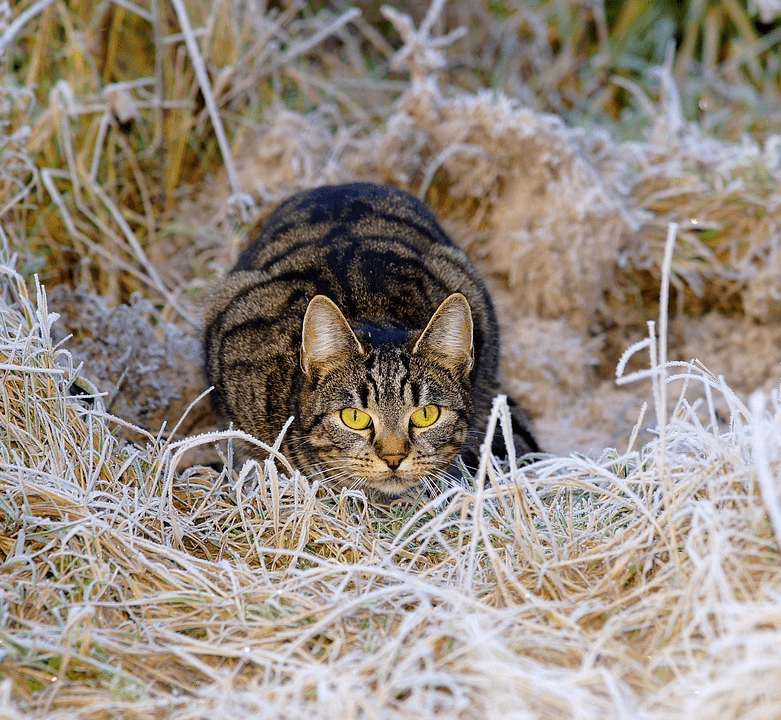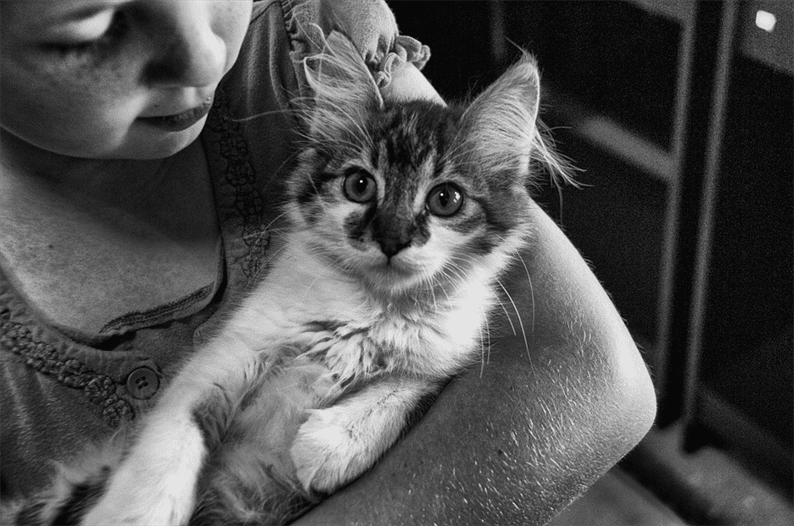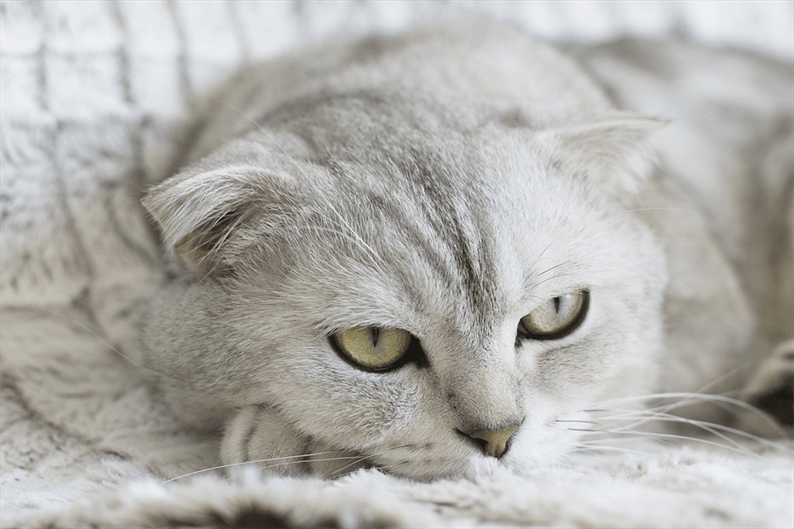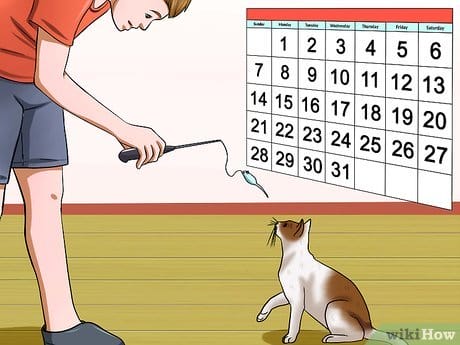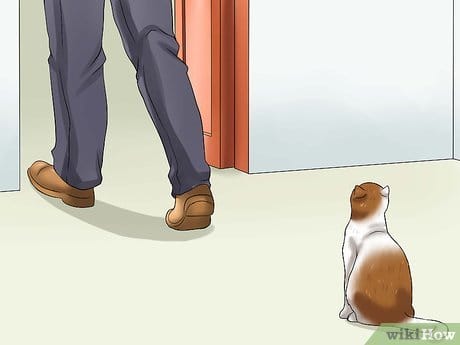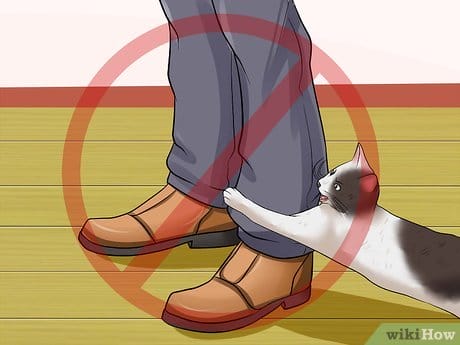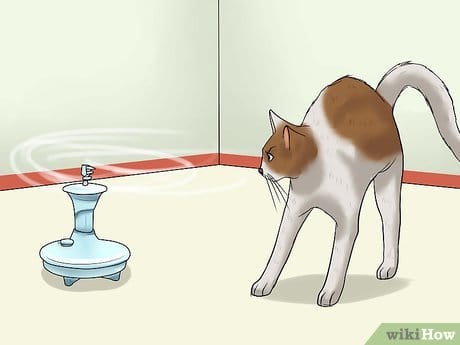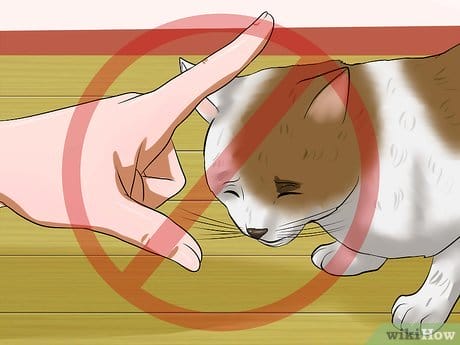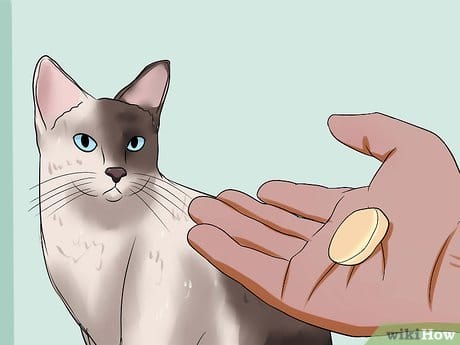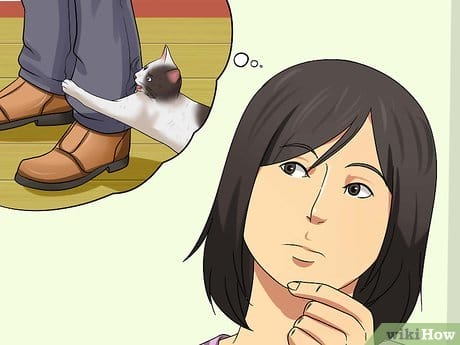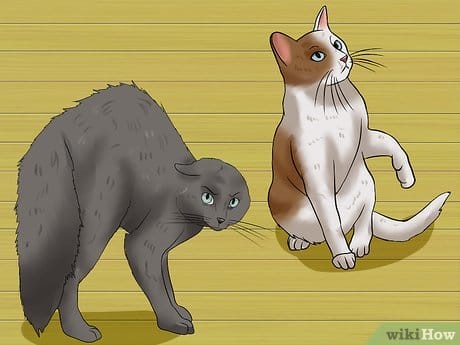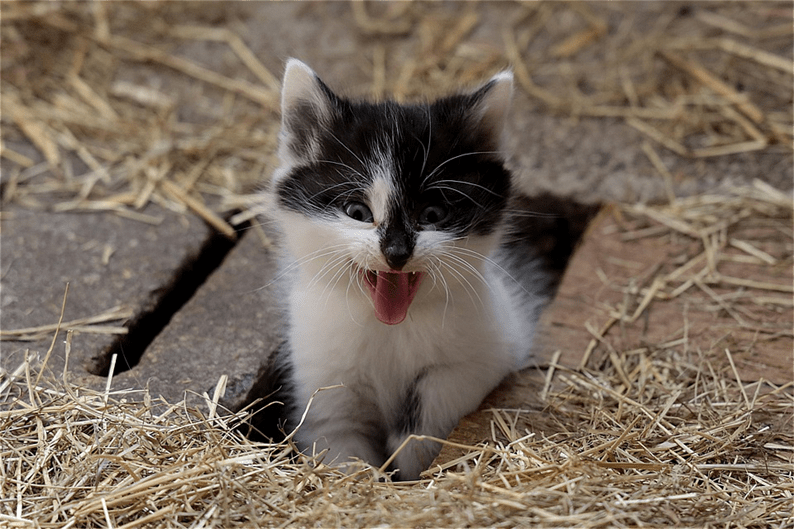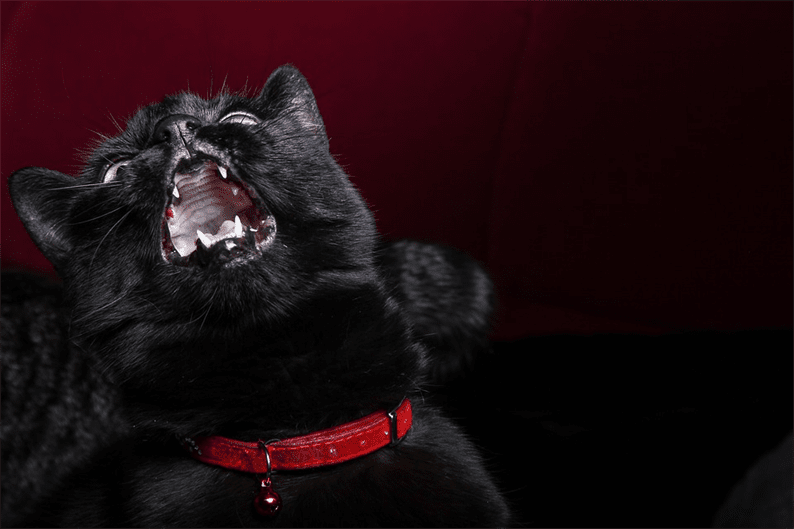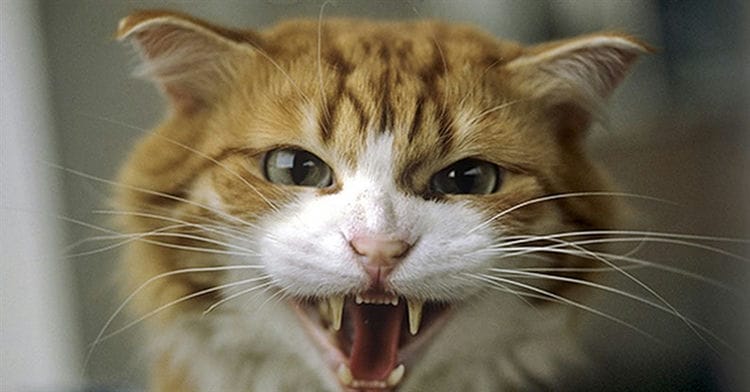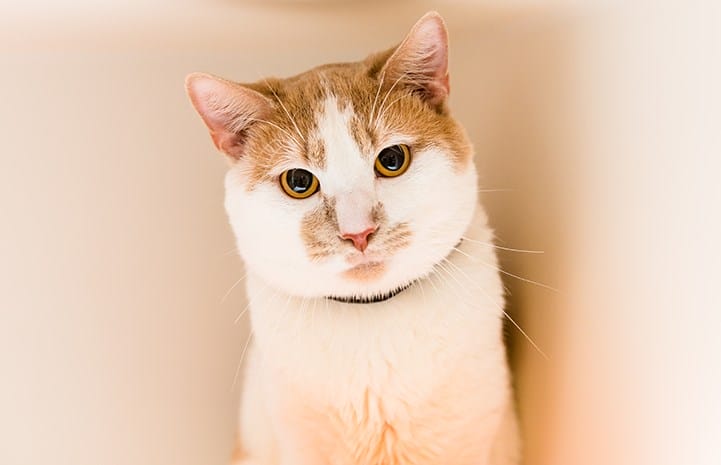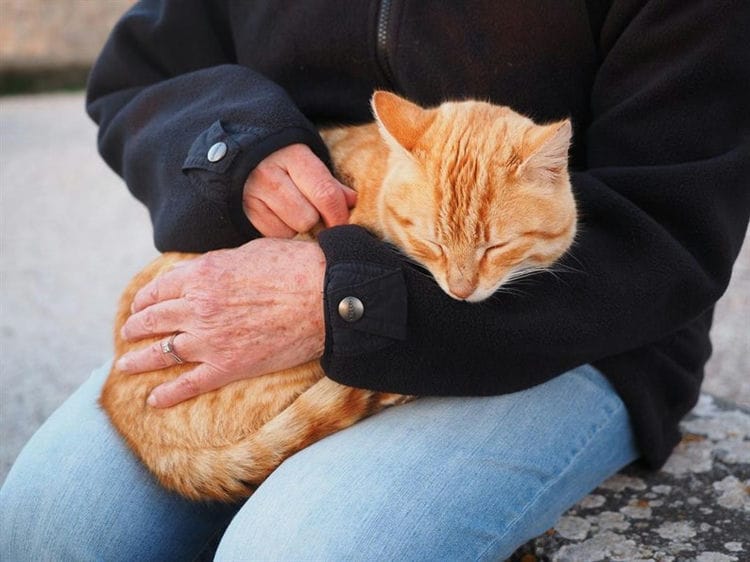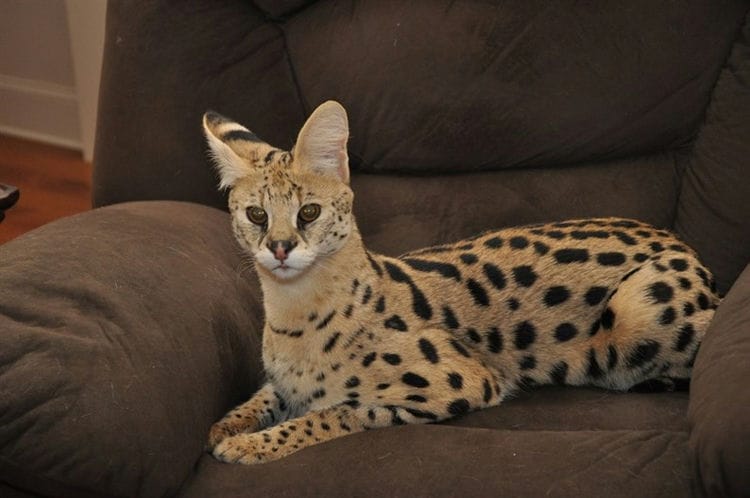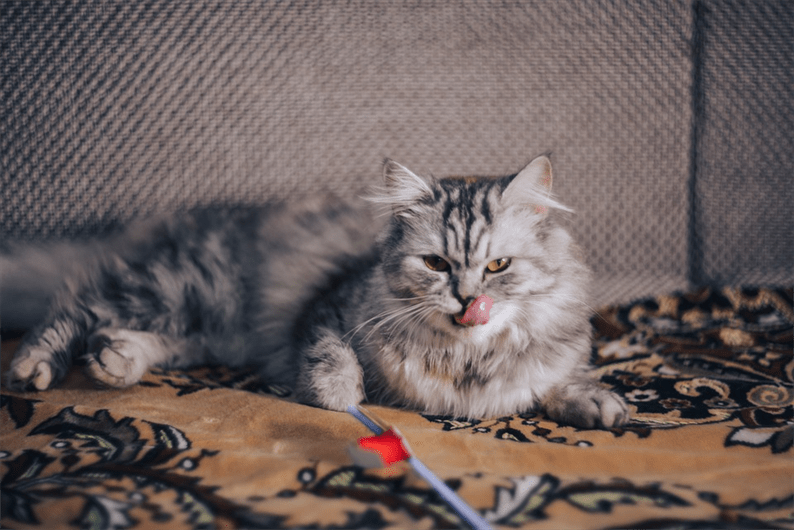The cat attacks the owner: the main reasons and options for what to do. What if the cat is very aggressive?
How to understand aggression?
Self-defense, the ability to show your physical strength and use it are nothing more than survival skills that help wild and domestic animals not only form, but also give birth to offspring. Cats coexist with humans for a very long time, but unlike dogs, they have always remained more independent.
Aggression in various forms is always present in the life of tetrapods, the exception is just a few breeds, which are not characterized by emotionality.
It should be understood that artificially bred breeds do not have the entire set of instincts, or rather, some of their skills are greatly dulled. The behavior of such individuals should be considered strictly individually, referring to a zoopsychologist or a very experienced owner of cats of the same breed.
If your cat suddenly becomes aggressive, you can calm her down, but this will not solve the problem and most likely, the attack of anger will recur soon. It is important to identify the causes of aggression and take measures to eliminate them. As long as the animal has a reason for bitterness, no amount of educational measures will help.
Anger and aggression: a sign of inequality
Domestic cats in the human home rarely show signs of aggressive behavior. For example, normally about 80% of free-living predators hiss at each other and strike, and 60% scratch people. If the purr grew up with a person and ended up among pets, then the indicators reach only 50% and 40%, respectively.
This means that upbringing and communication with a person from childhood affects the behavior of an adult pet. And here you need to separate two concepts: anger and aggression.
Very angry cat: aggression as a character trait
Why is the kitten aggressive, scratching and biting? The best answer is: because he is evil. An angry cat is an ill-mannered pet, who was simply always allowed to show such behavior to people. Anger is a character trait of such a pet, and the reason is pedagogical neglect.
Angry cats usually refer to the number of frequent hissing or growling cats. So, by their behavior, from childhood, they protected themselves from unwanted communication. They address their reaction almost equally to familiar and unfamiliar people.
WILD OR PSYCH? Distinguishing an angry cat from an abnormally aggressive one is easy: he gets angry in the same way in winter and summer, in the morning and in the evening, with family members or guests. The character trait was always present, and did not appear spontaneously.
True aggression: psyche and behavior
Real aggression is still a more spontaneous reaction, a response to certain external stimuli without regard to character and upbringing. It does not appear constantly and may depend on the environment, situation, season, sounds, smells, health factors, etc.
Interestingly, a cat’s aggressive behavior can be both normal and abnormal. It all depends on the reasons. For example, if the matter is in the lack of socialization of a kitten, then its defensive reaction is quite normal and natural, and it can be rebuilt, overlearn the animal.
If feline aggression is provoked by internal causes such as organic brain damage, then the problem is rarely eliminated. Abnormal and affective behavior in each case requires individual analysis and correction.
How does a cat make growls and hiss?
Growling is a vibrating sound made by the four vocal muscles in the lower larynx of a feline. In large cats – lions, tigers, leopards and jaguars – besides these organs, there is also such a part of the articulatory apparatus as a flexible ligament that replaces the hyoid bone. This bundle makes the “scream” so loud that it can be heard several kilometers away. Real growling is characteristic only of large cats. The rest of the family does not growl, but roar.
Maine Coon
Animals emit hissing on forced exhalation, stretching out the tongue in a special way and pushing the lower jaw forward. Absolutely all cats are capable of hissing, but growling or roaring is a talent that is inherent only in some species. In particular, British cats, Sphynxes, Maine Coons and some others are able to growl.
Why do cats growl and hiss?
Predators direct their main forces to foraging and hunting. They are in no hurry to fight the enemy, defending their territory, so when they meet, they first warn him of their indignation with a hiss or growl. For most hissing animals, this sound is just a warning. Sometimes it plays the role of a battle cry.
Large cats use growls to communicate with congeners. Animals can hiss not only at enemies, but also at the owner.
There is no beast worse than a cat: hissing and growling as a threat
Hissing, the cat bares its teeth and presses its ears to its head, acquiring a formidable look. Its fur is reared, fangs are exposed, claws are extended. At this moment, it becomes clear to the enemy that the animal is ready to attack. With all its appearance, it shows that it does not intend to joke, and lets the opponent know that he still has a chance to leave the territory.
Representatives of the feline family are skillful, dexterous predators. In battle with the enemy, they can severely injure or even kill the opponent. They express a serious attitude towards a fight with warning sounds – growls and hiss. If the hissing cat is ignored, it may lash out.
Fear disguise
Why does it happen that cats hiss, but do not attack? Aggressive behavior of an animal towards certain people may indicate its fear. Perhaps he has some unpleasant memories associated with them. If in the past a guest of the house, through negligence, stepped on the kitten’s paw or tail, you should not be surprised that the pet then bends its back and bares its teeth at its very approach.
People, not wanting, and sometimes not realizing it, often provoke stress in animals. A trip to the veterinarian, a frightening gesture, a sharp cry or other unpleasant sounds, or someone else’s animal can become an excessive emotional burden for a kitten. If from childhood the baby did not have contact with a person, he was not taken in his arms, he will hiss at the owner when trying to get closer. Such pets are afraid of a person even after they grow up.
Signal of pain or discomfort
Does a cat that has never shown aggression before suddenly start to growl? Perhaps something hurts her. Hissing and growling is a frequent signal of one of the following conditions:
- poisoning;
- epilepsy;
- toxoplasmosis;
- pain due to injury;
- rabies;
- hormonal disruptions.
Animals that have begun to experience hearing problems are capable of hissing. In this case, they lose the ability to navigate in space and are afraid that some kind of danger lies in wait for them.
Sign of discontent
The cat meowed for a long time and called the owner, and then began to growl at him. Why does the animal behave this way? The reason lies in her dissatisfaction. The animal asked for something, but his request was not heard. This is often done by spoiled, ill-mannered pets. If the cat began to behave this way, you need to take measures to reeducate her, teach her patience.
Dislike for a specific person
Peaceful cats sometimes show aggression towards strangers who come to their house. If the guests have never been to the apartment before, the cat may show disbelief by hissing and growling. It so happens that the irritation of the animal provokes some kind of smell that comes from the guest. It has been noticed that cats dislike dog owners more often.
A negative attitude towards a stranger is explained by the fact that he reminds the animal of some unpleasant event in his life. Maybe someone like that once scared him.
Why did the pet suddenly become aggressive and rush to the owners?
Most often, aggressive behavior is not a pathological deviation, but a consequence of the emotional state of the animal. It is necessary not only to pay attention to the immediate circumstances that led to the manifestation of hostility, but also to look for the reasons in the environment, in previous events, the past of the cat. Patient observation of your pet will help you find triggers and take steps to eliminate them.
Reaction to pain and feeling unwell
Pain is the most common cause of sudden aggression, especially in older or restless cats. Arthritis, dental disease, injury or infection are just a few of the reasons that can trigger aggressive behavior. In this case, the attack follows not only after touching, but also when the suffering pet is trying to forestall possible painful contact.
Other physiological conditions also lead to aggression. Cognitive impairment, loss of normal sensory perception (hearing, sight, smell), or neurological problems distort the instinctive mechanisms for recognizing danger.
Sudden fright or prolonged stress
Aggression can occur when the cat feels threatened or trapped. The fight-or-flight reflex triggers the sympathetic nervous system: if there is nowhere to run, the only option is to fight. Having instantly mobilized all physical capabilities, the cat rushes into the attack, and therefore such cases are especially dangerous.
Prolonged stress in cats is caused by both excessive attention and neglect on the part of the owner or mistress. Not all representatives of this genus can tolerate endless affection and contact with people. “Loved” pets are in a state of stress and can react with spontaneous hostility to the violation of personal space. Parting with the owner or limiting contact with him can also provoke outbursts of rage, the purpose of which is to attract attention.
Unpleasant changes: new smell, rearrangement of furniture, appearance of a competitor
Adapting to new conditions is another stressor for a cat. The resulting aggression is called status aggression. It can arise if the owner has decided to move the pet to another room, change the feeding place, or introduce new dormitory rules. Jealousy of other pets can also cause sudden outbreaks.
Redirected aggression occurs when a cat is scared or upset, but instead of pursuing the true concern, she turns her anger toward an easy target. To relieve excitement from an external and inaccessible stimulus – unpleasant noise, smell, game, competitors, she rushes at any person nearby.
Struggle for freedom, food and territory
A pronounced sense of ownership is found in both females and males. This type of behavior, unlike normal and temporary maternal aggression, can create problems. The object of the attack can be not only animals or strangers, but also the owners themselves. For example, it is often said that a mustachioed villain attacked a family member after he was forced to sit behind a closed door. There are times when an annoyed pet deliberately bites the owner, who is trying to intervene in his conflict with competitors.
Many cats, deprived of contact with humans at an early age, perceive their presence as a threat and use claws and teeth to turn the “enemy” to flight. Being on its territory, the unsociable predator bites and scratches the alien and calms down only after it is possible to drive it away.
What to do with a “pissed off” pet?
Dilated pupils, coiled or pulled back ears, an upturned or flapping tail, and an arched back are all signs of an impending attack. The person must stop the attack of aggression and prevent the cat from taking the next step. At the same time, violence is unacceptable. Attempts to restrain a pet with physical strength can only aggravate the situation. Losing a battle will not remove the aggression, and the wrong harsh reaction will cause irreversible behavioral changes.
The main way of counteraction is keeping calm, refusing to abrupt movements and exclamations. It is necessary to clear the escape routes and try to distract the cat’s attention by using toys or other objects – a pillow, rolled up socks, etc. If you cannot avoid an attack, the cat has already attacked a person and bites, you can bring it to life by sprinkling water from a spray bottle.
The very first episode of aggressive behavior requires analyzing the situation and establishing the cause. If aggression manifested itself during the game, you need to abandon provocative scenarios and focus on activities that will release energy without direct contact. Aggressive behavior due to fear from external stimuli (noises, smells) can be neutralized with soothing words and affection.
Adult cats develop a strong instinctive survival mechanism, so they may feel vulnerable to attack when they are too relaxed. Habitual caress can lead to a sudden aggressive outburst and escape. A healthy cat demonstrating this behavior gives warning signals in advance: it strains its muscles, stops purring, hits its tail, hisses. The correct reaction in this case is to stop petting and give her freedom.
To adequately assess the severity of the problem, it is necessary to observe the condition of the cat after it has attacked a person. If it was a spontaneous reaction, she runs away a certain distance, then stops, she can start licking her paw, showing remorse. If the attack of aggression is delayed and the animal continues to pounce on people and show signs of stress, then measures must be taken to isolate it. The irritation should disappear within an hour.
When is a vet visit required?
If sudden throws, during which the cat scratches and bites, last for several days, it is necessary to limit contact with the pet and consult a specialist. Aggressive cats and cats become a real threat to the health of the owners, inhabitants and guests of the house.
Unexplained behavioral changes in cats are most often a symptom of an illness. Early diagnosis will help keep your pet healthy and safe for those around you. If aggressive behavior is due to mental disorders, the veterinarian will prescribe a course of medication to help relieve stress.
Causes of aggression
Cats are predators by nature. Their hunting instincts can make themselves felt at the most unexpected moment for the owner, for no apparent reason.
The cat can attack and bite in such situations :
- During the game. In the wild, this activity is not so much fun as hone hunting skills. Usually, domestic cats do not need to attack anyone. However, there are times when an animal gives free rein to its instincts. As a rule, the reason for such attacks can be the poor upbringing of the cat.
- Often cats show aggression when the owner makes some loud or unusual sounds (for example, screaming or punching on the table).
- The cat rushes to the feet of the owners when they walk. Usually this behavior is characteristic of kittens, since they have not yet been trained in normal behavior, but it happens that adult animals allow themselves such attacks.
- Cats can attack or hiss at people when they want to get something from them (for example, if the animal wants to attract attention or eat).
Sometimes the owners themselves, unknowingly, encourage feline aggression. This happens most often during the game. The cat, supposedly playfully, attacks the owner, but he does not attach importance to the fact that the animal is behaving aggressively, and continues to play with the pet, which further provokes and provokes the tomboy.
Also, the reason for the aggressive behavior of a cat may be its unwillingness to contact with this or that person. Cats are very wayward animals, and you should not forcibly hold them in your arms or pet them if the animal does not want to.
1 Pain
An obvious example: a cat who has been stepped on (or pulled) on its tail may well scratch the offender with a hiss – this is how children most often suffer. A less obvious situation is latent physical discomfort.
A cat may have joint pain in osteoarthritis, a head may ache with hypertension, or a toothache – and she will not tell you about it, she will simply become an extremely irritable and quarrelsome creature. The first thing to do if the behavior of a domestic cat worsens is to take it to a veterinarian for examination.
2 Fright
In fact, almost all types of aggression are self-defense, insecurity in the situation. If the cat is frightened by something, but there is no opportunity to run away and hide, it behaves typical of any animal cornered – it fights to the death. It usually goes to the owner, even if he is not at all the type who so loves to work with a puncher in the next apartment.
Typical behavior of a cat in a veterinary clinic: at first it does not want to leave the carrier, but being dragged out onto the examination table, it shrinks into a ball, nestles itself against the surface, trying to become invisible. It does not help – wait for the slashed hands, heart-rending screams and urination. Not because the cat is angry. She’s just scared!
Shocked cat
3 Obsessive caresses
Cats are not social animals like dogs. Sometimes they are in the mood for communication, sometimes they would like to be left alone. If the owner mechanically strokes the pet lying on his knees, while he watches TV / reads the newspaper / stares at the phone, he should not be surprised when claws or teeth cling to his hand. Most likely, the cat asked long ago to stop stroking it – wagging its tail, pressing its ears or beeping. And only when these signals were ignored, she despaired and went on the attack.
Angry cat
4 Hormonal storm
One of the causes of aggression in cats is the state of sexual heat. In fights for a cat, males inflict serious injuries on each other. The cat itself in heat also experiences severe discomfort – both physical and emotional, which can result in fits of rage towards a person, dog, relatives.
After mating, the aggressiveness may even intensify as the offspring protection mode is activated in the cat. Not all cats are caring fathers, sometimes they kill their own or other people’s kittens in order to be able to mate with a female again. In nature, a cat raises kittens alone and seeks to protect against any encroachment.
Untarnished cat
The hormonal background of sterilized animals remains equal, which reduces the likelihood of aggressive behavior.
5 Territorial aggression
Even neutered cats are by nature solitary animals that live and hunt in their territory. It is not easy for them to make friends with relatives, and often cats living in the same apartment are neutral, but do not feel warm feelings for each other. Any provocation or a hint of competition leads to outbursts of aggression. In this case, the owner also gets it, who is forced to separate the cat fights.
British cat and Thai kitty
6 Game aggression
Otherwise, such aggression is called gambling: perhaps the pet is not at all angry, but simply too addicted to the game, forgetting to calculate the strength. This is how kittens play with each other – they practice the techniques that adult cats use in fights. Usually, playful aggression is characteristic of young animals.
There is only one way out – never play with the cat with your hands, do not tease it. Punishing your pet is also a bad idea, just cut off communication and contact until the naughty cat calms down. If a domestic terrorist likes to throw himself to his feet from an ambush – keep a spray bottle with water close at hand to cool his hunting ardor.
It is important to explain to the child how to play with the pet correctly – it is in children that cat scratch disease is more common.
Baby and cat
Baby and kitten
7 Redirected aggression
The most insidious type of aggressive behavior. Reason: The object that irritates the cat is out of reach. Nervous tension builds up, breaking through with aggression towards the one who is nearby, sometimes after several days. Yes, some cats are inclined to “vent their anger” on innocent owners, because they cannot fight a neighbor’s cat, and the sight and smell of it causes territorial aggression.
British cat looks out the window
In addition, cats are born hunters. House cats love to watch birds through the window. The owners laugh – this is her instead of the TV, and even specially feed the birds. But if the cat does not have the opportunity to throw out the hunting impulse, it can rush to the dog or person. This does not mean that the window needs to be covered, but more attention should be paid to active games that will allow the cat to “let off steam”.
Cat playing with a ball
Don’t be angry with your furry charges. If you study their habits, a lot becomes explicable, and most importantly – fixable!
Methods for dealing with aggression in cats
What if the cat rushes to the owners? In fact, there are few options in such a situation. Your main task will be to make it clear to the animal that aggression is unacceptable, and that any manifestation of it will be immediately punished. Try the following methods for raising cats:
- After you have been attacked by your pet, it must be punished immediately. Scold him loudly, shame him. You can also spray the cat with a spray bottle with water several times.
- Play with your cat more often and spend more time with it. This will help her use up excess energy and she will behave more calmly.
- If a cat attacked the mistress, you should not let the cat sleep with her for several nights, not letting the animal into the bedroom. If the cat meows and crosses around the door, ignore her attempts to get into the room. This method will show the animal who is in charge in the house, and, in the end, the cat will behave more calmly.
Remember that you need to punish the cat not so much with physical methods as with psychological ones. The use of force in such cases can only aggravate the situation and make the animal even more inadequate. Concentrate on letting your cat understand which of his actions are unacceptable and cause your displeasure.
It would be useful to contact the veterinarian in such a situation. The specialist will be able to give more detailed recommendations on the upbringing of the cat, as well as check the presence of pathophysiological disorders in the animal.
Method 1 of 2: How to wean a cat from aggressive behavior
-
![The cat attacks the owner: the main reasons and options for what to do. What if the cat is very aggressive?]()
one
Schedule daily play sessions with your cat. These sessions should be about 10 minutes long and should be done when the pet is in a playful mood. Try to organize at least two gaming sessions a day. Increasing the duration of games with the cat will correct one of the possible causes of his attacks and additionally provide you with the opportunity to teach him not to attack or bite you.
- This fishing rod toy, which you can make yourself or purchase from a pet store, will allow you to maintain a distance between the cat and your legs and arms. Such toys allow you to stimulate the pet’s innate instinct for a predator to hunt its prey. Stuffed animal toys are useful if the cat likes to fight; they are especially suitable for kittens. Choose a stuffed toy about the size of your pet. If he gets too rude while playing with you, rub the stuffed toy against the cat’s belly to redirect his play energy away from you to the toy. You can also throw one of the cat’s favorite toys aside while playing. This will serve two purposes: you protect your arms and legs from the pet, and you will also stimulate its innate instinct to chase and lash out at it.
-
![The cat attacks the owner: the main reasons and options for what to do. What if the cat is very aggressive?]()
2
Provide a stimulating environment for your cat. Keeping your cat busy in its environment is likely to make it less likely to attack you. You can increase your pet’s stimulation by providing your cat with a variety of toys and updating them regularly. You don’t have to constantly buy new toys. You can simply use different combinations of them so that the cat does not have to always play with the same objects.
- Provide your cat with new items to explore on a regular basis, such as empty cardboard boxes.
- Provide the cat with a puzzle toy. A treat is placed inside such a toy. The cat will have to work hard to get a treat from the toy, which will keep it busy for a while and provide mental stimulation.
- Place the old toy in a new item, such as an empty cardboard box or paper bag. This is useful when you notice that your cat is tired of some of her old toys.
- Place climbing playgrounds or scratching posts where your cat can climb and play; if your cat is comfortable outside, you can purchase or build an outdoor enclosure for her to play safely outside. Visit your nearest pet store for information on the types of outdoor enclosures you can purchase.
-
![The cat attacks the owner: the main reasons and options for what to do. What if the cat is very aggressive?]()
3
Give your cat a break if he is playing too rough. Get up and leave the room, ignoring the cat if it plays too roughly. You can even go to another room and close the door behind you, blocking the pet from accessing you. As cats try not to take actions with negative consequences, depriving the pet of the opportunity to have fun with you will teach him not to play rough with you anymore.
- It is important to get up on your own and leave the cat, and not pick him up and carry him to another room. Your cat may interpret your touch as reward, and you should not reward him for playing rough.
-
![The cat attacks the owner: the main reasons and options for what to do. What if the cat is very aggressive?]()
four
Prevent attacks on your ankles. At the most unexpected moment, the cat can jump out of its shelter and bite you on the ankle. For your cat, the ankle is an easy moving target, especially if your cat has no other toys or items to play with. When your pet bites your leg, do not try to run away or pull away. This behavior is inherent in prey, and your cat’s predatory instincts will only make him bite you harder.
- Instead, gently try to push the cat out. Since the prey usually does not move towards the predator, this action will confuse the pet. As soon as the cat realizes that you are not acting like prey, it will immediately release you.
- Once free, stand still for a while and ignore the cat; the pet will stop biting when you stop providing it with the pleasure of catching you by the ankles.
-
![The cat attacks the owner: the main reasons and options for what to do. What if the cat is very aggressive?]()
five
Install scare devices in your cat’s normal hideouts. If you’ve identified areas that your pet likes to attack you from, make them unpleasant for him in some ways available to you. There are special scare devices on the market that you can use, such as upside-down mousetraps or motion-triggered compressed air sprays. These devices will scare the cat away without harming it. In the end, he will stop approaching his favorite places due to the fright he has experienced and the sounds created by the devices.
- A cocked mousetrap upside down will jump into the air when the cat steps on it.
-
![The cat attacks the owner: the main reasons and options for what to do. What if the cat is very aggressive?]()
6
Don’t punish the cat. It is very important to remember that cats do not learn from punishment (for example, screaming, hitting, clicking on the nose). Punishment will make your pet fearful and hostile towards you, and may cause confusion in your cat. Since the punishment usually follows after the wrong actions, the cat does not really understand what it is being punished for.
- Some cats even see punishment as a challenge rather than a deterrent.
-
![The cat attacks the owner: the main reasons and options for what to do. What if the cat is very aggressive?]()
7
Encourage good behavior. Cats will repeat behaviors that have positive consequences for them; if you give your pet lots of positive rewards for doing the right thing (for example, playing cautiously, curling up next to you in a ball instead of attacking your arms), it will continue to do so. Remember that positive reward should be given at the time of doing a good action, so that the cat has an associative link between good behavior and receiving reward.
Method 2 of 2: Learn About Feline Attacks
-
![The cat attacks the owner: the main reasons and options for what to do. What if the cat is very aggressive?]()
one
Understand why the cat attacks you. In the wild, cats are carnivores. When a cat tracks you and attacks and / or bites, it considers you as its prey. You probably do not consider yourself a prey, since you are the owner of the animal and is significantly larger than its size. However, if a cat attacks your ankles, then it is demonstrating precisely the innate instinct of a predator.
- The cat may be attacking you for lack of toys or other stimuli to keep him busy. He may be bored and you seem like an easy target for entertainment.
- Lack of interactive play time can also cause pet attacks. Kittens weaned from their mother and their fellows too early do not know the permissible bite limits, so they are more likely to attack and bite the owner. What appears to be fun behavior for a kitten sometimes turns into a big behavioral problem when it grows into an adult.
- Health problems such as hyperthyroidism and central nervous system dysfunction can also lead to attacks. Your veterinarian can help you identify the underlying disease behavior. The first step is to find out whether or not you have a health problem before you start correcting your behavioral problems.
-
![The cat attacks the owner: the main reasons and options for what to do. What if the cat is very aggressive?]()
2
Pay attention to your cat’s body language. When playing with a pet, it can be difficult to distinguish between normal play behavior and attacker (too rough play). However, your cat will give you body language cues so you can understand if he is in a playful or hostile mood. For example, in a cloudless playful mood, the pet will keep its mouth ajar, and it will jump a little sideways with its back bent upwards. At the same time, it probably will not create much noise.
When the pet prepares to attack, it begins to hiss and growl during the game. It may also try to grab your hand to bite it, with cats often pressing their ears to their heads, wagging their tails nervously, and dilating their pupils.
-
If you are not playing with the cat, but notice that he is sneaking up on you, then you can be fairly confident that he is preparing to attack you.
…
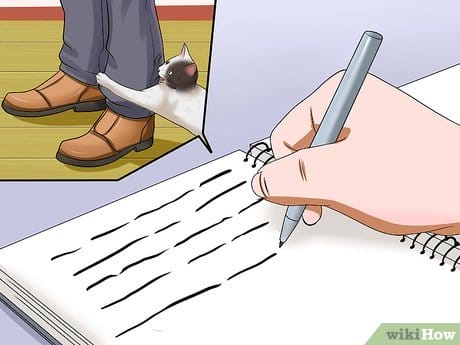
-
-
3
Keep a diary of the cat’s attacks. This will help you better understand when your pet’s attacks are most common. For example, you may notice the cat’s tendency to grab and bite your ankles in the morning after waking up, or make sure that aggression appears every time you interact with your pet. If you can identify the trend most likely to be attacked, it will be easier for you to plan activities to redirect the cat’s attention away from the attack to playing with toys.
The reasons for the attacks of the cat on the owner
There are several reasons for the aggressive behavior of a four-legged friend. If the owner learns to distinguish between them, then you can control the animal and control its behavior.
The attack of the cat on the owner is a negative manifestation of the character of the animal.
Here is a list of the most accurate signs of aggression and arousal in domestic cats towards their owners:
- defensive posture;
- ears are directed backward, flattened;
- the fur on the withers rises to the top;
- the tail is curved inward;
- crouching gait;
- turn to the enemy;
- open mouth, hiss and spitting.
If the owner found these signs in his pet, then you should be extremely careful with him, as there is a threat of attack from the animal.
Wrong upbringing
Attacks on the owner by an already adult domestic cat are often associated with his improper upbringing from childhood. A small kitten is not weaned from the habit of biting the leg or arm of its owner. Lack of punishment is an incentive to continue this behavior.
Important! At an older age, such attacks on the owner by the cat become a habit, which ultimately develops into poor upbringing.
Poor upbringing of a cat is the reason for its aggression
Breed features
Predatory instinct is one of the manifestations of a cat’s natural characteristics. This behavior is typical of the game. However, the game is only for humans, while for a pet it is a hunt.
Sometimes the roar of a cat is associated with his desire to show himself as the master of the situation. Even if the pet is the only animal in the house, its hunting instinct manifests itself at the genetic level.
In order to reliably establish why the cat rushes at the owner and bites, it is necessary to investigate the circumstances under which this process occurs. It should be understood with what actions this is connected.
Important! The cat rushes at the owners, what to do, how to do the right thing? The first step is to move away from it at a certain unattainable distance.
It is necessary to separately highlight some varieties and breeds of cats that are “evil by nature”:
- Siamese. This breed has an innate “cult of the owner”, in which the cat is jealous of its only owner and attacks the rest of the household.
- “White” cats. Aggression is associated with the presence of “Angora” blood. Most of these cats are born deaf and show excessive aggression in this regard.
- “Blue” cats. They have a natural distrustfulness.
A cat’s aggression may be based on breed characteristics.
Separation from mom
The state of a pet in which its needs are not satisfied is called frustration. For example, early separation from mom or improper weaning from cat milk.
As a result of the latter, the cat cannot independently procure food for itself. This instinct should have been taught by the cat. Signs of this condition:
- the cat has become aggressive, attacks the owner, even if he trusts her;
- the pet growls if it has not received the proper reward;
- growls loudly and rushes at the door.
Cases of critical aggression
In addition to the analyzed situations, uncontrolled aggression is also possible. To pay off it requires medical intervention. Otherwise, an animal in an insane state can cause fatal injuries to people.
Unsatisfied sexual instinct
Neglect of castration and lack of mating can result in a serious problem in the future. The unsatisfied sexual instinct does not go away over the years, but constantly accumulates. As a result, in the middle or at the end of life, the accumulated energy is redirected into a negative channel. Behavioral disorders occur, accompanied by increased nervousness and outbursts of aggression.
20 years ago, my uncastrated 9-year-old cat began to attack me, my mother, and, worst of all, my little sister for no reason. Then there was no money and wide opportunities to study why this happened, there were only guesses. Later, I heard from friends every now and then: a non-castrated domestic cat went crazy, caused serious injuries, and had to be euthanized. And my grandmother’s friend almost lost her hand. So castration is humane both in relation to the cat and in relation to others.
Owner Maria
The cat has gone crazy – literally
Feline craziness is a rare occurrence in veterinary medicine. In 99% of cases, aggressiveness is associated with psychological trauma, poor parenting, self-defense, or pain. A mental disorder can only be determined using laboratory diagnostics.
If the pet rushes to the household, make an appointment with the veterinarian. In the absence of pathologies and a stable mental state, he may need a zoopsychologist.
Rabies
The rabies virus is deadly for humans, so it is necessary to clearly know the main signs of its manifestation. When infected, it is noted:
-
profuse salivation
-
aggressiveness or lethargy;
-
fear of light and water;
-
perverted appetite (eating inedible items).
The patient should be isolated in a separate room to prevent the spread of the virus. There is no cure for this infection. The only way to protect yourself is through timely vaccination.
Other reasons
Fear is one of the most common causes. Due to a decrease in attention, the cat rushes to the owners. And if, as a kitten, an animal received insults and even beatings from a person, then fear will accompany an adult animal all its life.
Among the main factors are:
- the cat attacks the owners if some kind of irritant appears;
- aggression is accompanied by threatening postures;
- in addition to growling and posture, the animal can swing its paws;
- after the situation has been resolved, the animal relieves stress by licking the fur.
Important! If a cat attacked a person, it is useless to scold, let alone beat him. It is unlikely that such a punishment will lead to correction. Most likely, on the contrary, the cat will always expect bad things from the person, which will aggravate the situation.
Resentment is a fairly common situation in which a cat attacks its owners. If the pet believes that he was undeservedly offended, he can take revenge and behave aggressively, even when the owner takes him in his arms to caress. You should use a trick and try to appease the pet with the use of treats.
Another significant reason is the situation when the cat does not like to be in a large crowd of people, play with children or change hands. He may be unhappy with the situation and, as a result, attack those who bother him. To eliminate the factor, the animal should be isolated in a separate room or on the balcony, especially when it comes to children.
A cat’s pregnancy can also be the reason for aggressive behavior. This is a natural condition in which the female can attack in order to protect her unborn kittens. It is enough to make it clear to her that she can trust the owner. This behavior will disappear.
A painful condition can cause aggression, the animal can go berserk at any time. In such a situation, the pet wants to be touched and disturbed as little as possible. To recognize the condition of the disease, it is enough to follow the pet for just a while. If the manifestation of other signs is noticeable: poor appearance, apathy, poor sleep, refusal to eat, then you should visit the veterinarian to establish a diagnosis and carry out timely treatment.
Cat aggression has a number of different causes.
What should the owner do if the cat bites and attacks
To understand what to do if a cat attacks its owner, you can use the reason for its aggressiveness. The problem that has arisen is solved by proper upbringing or treatment.
Educate
Regardless of the reason for the pet’s inappropriate behavior, reciprocal aggression from the owner is unacceptable. Animals are best affected by ignorance. If the attack occurs during joint play, defiantly leave the room and do not come into contact with the cat until she realizes her mistake.
Education begins from the first days of the appearance of a mustachioed pet in the house. If the moment is already missed, then it will take more time. It is more difficult for adults to overcome established habits than kittens.
To reeducate a cat, the following recommendations are useful:
-
Eliminate hand games. Redefine your arsenal of toys in favor of taunting rods and mice that suit your hunting instinct.
-
Do not pull out when another conflict arises. Gently remove your hand when the grip is loose and leave the area immediately.
-
Get a scratching post. Make sure the type you choose suits your pet. The scratching post will not only shorten the length of the claws, but also take on some of the energy.
-
Use a spray bottle. The water jet is the ideal tool to prevent unwanted activities.
-
Get another pet. If the reason for the aggression lies in a lack of attention, then an additional playmate will quickly solve the problem.
Be patient. Over time, your efforts are bound to bring results.
Treat
If a disease is detected, the problem is eliminated after it is cured. Prolonged and frequent attacks require a veterinarian checkup.
A cat with an unsatisfied sexual instinct will have to be castrated. With a mental disorder, long-term drug treatment will be required, but rabies cannot be cured. The patient will have to be isolated in a special box to confirm or deny the disease. A positive prognosis is possible only with a vaccine against the virus.
How to reduce the risk of aggression and raise an affectionate animal
An affectionate animal can only grow up in a caring and loving family. Never, under any circumstances, use physical punishment. Your hands should only be associated with affection.
Try to talk to your pet often and study his habits. When discontent appears, accompanied by warning signals, do not test his patience, but immediately stop unpleasant actions.
If the cat grows next to the child, then make sure that the baby knows how to handle him carefully. Suppress harsh grasping and squeezing.
Sterilization and its consequences
After castration, cats usually become much calmer. Often this is the determining factor for the owner, who decided on the operation. Unfortunately, this is not always true for females. Often, the veterinarian is asked that the cat is aggressive after spaying. What to do in this case? We need to deal with the reasons again. There can be three of them here:
- Stress factors.
- Internal influences.
- External stimuli.
Very often the seam hurts the animal, and this seriously affects its behavior. Check with your veterinarian, he will prescribe pain medications. In addition, if there is a change in the hormonal background, then it must be urgently corrected with the help of special medicines.
Pregnancy and childbirth
When a cat is carrying kittens, her character gradually changes. In the early stages of pregnancy, she becomes very affectionate and constantly wants to spend time with her owner, but closer to childbirth, everything changes. The animal begins to look for a cozy corner for itself to be alone. The cat is aggressive, does not allow combing. What to do? It is best to leave her alone and let her lie in the “nest”. After a while, she herself will come to you to soak up.
It is important to remember that any loud noises can traumatize the psyche of your cat, so you need to create silence and allow your pet to rest in peace. In this case, the state usually levels off. Sometimes the veterinarian additionally prescribes special agents that will relieve irritability and improve the condition – these are pheromones, catnip, anxiolytics. It is recommended to use them only under medical supervision, especially if you have a pregnant or lactating cat.
If she recently became a mother of fluffy lumps, she will try to protect them from the outside world as much as possible. The best thing you can do is not to look into the house, or do it very carefully, and only when mom is out to eat. You will have enough time to get to know the babies when they are a little older, so do not annoy the animal again.
How to calm an aggressive cat
The first step is to let the pet take its place or take a dark corner to rest. Minimize provocative factors and avoid contact with the cat as long as necessary to calm the animal. What should I do if the cat is aggressive and attacks? Get a towel or blanket that you can wrap her up in and block the threat. You can take a water pistol and use it for protection. Usually, it is enough to spray the cat once to bring him to his senses.
After that, try not to annoy the furry creature. Walk slowly and smoothly, and speak more softly. Your pet is also a person whose feelings must be reckoned with. If you are of a different opinion, then it is better not to have cats at all, and even more so dogs. Remember that you have to demonstrate goodwill. No physical punishment, ice diving or other extreme measures. This will only aggravate the situation.
Calming your cat
- You need to leave the irritated animal alone – let it come to its senses and calm down.
- When another animal appears in the house, protect the cat from contacts for a while until it gets used to the presence of a stranger.
- He begins to hiss at the stranger – to give the four-legged owner of the territory a thing related to this new neighbor – let him sniff, get acquainted with the smell.
- The best behavior of the owner when the cat hisses is to ignore the hiss, ignore it.
Is it possible and how to make sure that the cat does not hiss?
If a cat hisses because of its character and breed, then nothing can be done. But, if the reason is different, external, then the owner simply needs to remove it. And if you can’t solve the problem with the cat on your own, there are specialists who you can turn to for help.
Nothing helps
If you have tried different ways to calm your pet, but have not achieved a result, it is time to consult a doctor and ask what to do. The cat has become aggressive and bites, which means that the specialist must diagnose and conclude whether the animal suffers from any disease and does not need special means. If nothing of the kind is found, the specialist will prescribe sedatives. There are a lot of them today, so let’s skip specific names. Modern developments allow you to achieve good results in a short time, and the side effects of drugs are often minimal.
Euthanasia
The most extreme way to solve the problem is to put it to sleep. If, despite your care and affection, the drugs taken, regular walks and other measures, the animal still continues to hiss and bite, then the veterinarian can offer a cardinal solution. Perhaps we are talking about a serious mental disorder, which is unlikely to be cured.
What I would like to add here: you should not pass the cat to other people in the hope that the problem will be solved. Most likely, it will only get worse, so be honest with yourself to the end. You have taken responsibility for the life and health of this animal, you and make decisions, no matter how difficult they may be.
Examples of the most aggressive breeds
The most aggressive breeds are discussed below.
Siamese
Why a kitten’s whiskers break: the main reasons and what to do
Many pet lovers prefer Siamese cats because they are very beautiful in appearance. However, not everyone knows that as pets, they are not the friendliest to those around them. Siamese cats and cats are known for communicating mainly with only one owner in the house, and other family members are jealous of him.
Important! They can literally completely ignore everyone else in the house. They do not like children and are not very affectionate with anyone other than their beloved master.
Not respecting other people, representatives of the breed easily fall into an aggressive state and can even cause serious wounds.
Siamese cats are one of the aggressive breeds
Savannah
The cat breed has a direct blood relationship with the Serval and the Siamese cat. The animal is characterized by energy, mobility, jumping ability, curiosity.
The habits of the predator are clearly expressed, hence the aggressive behavior towards the owner. Like Siamese cats, Savannah chooses one single owner, and treats the rest down.
Hunting instincts, passed from the serval, sometimes require careful control by the owner and education from childhood.
Savannah – a mixture of Serval and Siamese cat
Abyssinian
Abyssinian cats have a very energetic temperament, natural curiosity. Until old age, they remain mobile and restless. Some people compare the character of an animal with that of a dog. High mobility is often accompanied by bouts of aggression, especially during the game.
Important! Since childhood, the breed has no sense of fear and self-preservation, therefore education is required from an early age.
Abyssinian cat breed is restless from birth
Feline attacks are no joke; cat bites can be more susceptible to infection than dog bites. The reason for this is that the cat’s sharp teeth create deep puncture wounds in the area, sufficient for bacterial activity. What to do when a cat attacks its owners? While most people find this expression of a cat’s character amusing, you shouldn’t continue playing this game. It is necessary to make it clear to the beast that his behavior is not permissible. To this end, cats are sprayed with water, ignoring their attempts to continue playing.
How to respond to growls
It is important to follow the list of rules that will allow you to pacify the pet and eliminate the conflict:
- The feline nature is so arranged that you are unlikely to be able to pacify the pet right away. Wait a few minutes for the animal to calm down.
- When a certain amount of time has passed and the pet has completely calmed down, try to establish contact with him. Pet him, talk to him, give him a treat.
- If the reason lies in the fact that the animal is in pain, take it to the veterinarian immediately, as the pain may indicate the severity of the disease.
It so happens that the cat is simply aggressive in nature, and nothing can be done about it. In this case, do not try to change the pet, but adapt to it. He loves you, he just cannot show it with affection and purring. Understand it and accept it as it is.
Sources used and useful links on the topic: https://vashipitomcy.ru/publ/soderzhanie_i_ukhod/koshka_stala_agressivnoj_glavnye_prichiny_nenormalnogo_povedenija/20-1-0-1975 https://ourkoshki.ru/povedenie-kos-u-uk/agressota .html https://MurKoshka.ru/povedenie/koshka-shipit.html https://MurKoshka.ru/povedenie/koshka-stala-kidatsya-na-hozyaev.html https://KoshkaMurka.ru/8147-pochemu- koshka-napadaet-na-hozyaina.html https://zen.yandex.ru/media/zveropolis/7-prichin-agressii-u-koshek-5c1a51796fa9cf00aa44b168 https://ru.wikihow.com/%D0%BE%D1 % 82% D1% 83% D1% 87% D0% B8% D1% 82% D1% 8C-% D0% BA% D0% BE% D1% 82% D0% B0-% D0% BD% D0% B0% D0 % BF% D0% B0% D0% B4% D0% B0% D1% 82% D1% 8C-% D0% BD% D0% B0-% D0% B2% D0% B0% D1% 81 https://gafki.ru/koshki/kot-napadaet-na-khozyaina.html https://kinpet.ru/pochemu-kot-stal-agressivnym-i-napadaet-na-khozyaina-ili-drugikh-zhivotnykh – / https://FB.ru/article/383184/stala-agressivnaya-koshka-chto-delat-kak-uspokoit-jivotnoe https://howtogetrid.ru/kot-ili-koshka-shipit-na-xozyaina-chto-delat / https://KotMurka.ru/uhod/koshka-rychit-shipit.html
